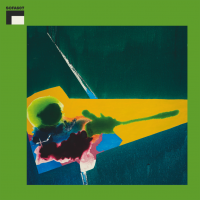Home » Jazz Articles » Album Review » Benjamin Moussay: Promontoire
Benjamin Moussay: Promontoire
The breezy yet comforting harmonic landscape presented in opener "127" provides an apt point of reference for the melodic openness and largely patient pace that pervades the remainder of Promontoire. Like the opener, "Monte Perdido," "Don't Look Down" and the title track are inspired by the countryside and mountains—Moussay himself being a dedicated mountaineer in his spare time. Judging from the music, the mountains appear to evoke sentiments of grandeur and nostalgia in the composer, while "Don't Look Down" also reveals Moussay's awareness of the danger lurking in their depths. Here the pianist trades his otherwise unhurried temperament with pedal-heavy legato runs, creating patterns as his fingers speed trough arpeggios. One can't help but associate Moussay's traditional interpretation of nature with its symbolism during the Romantic era, bringing to mind the landmark landscape paintings of Caspar David Friedrich or Albert Bierstadt.
Elsewhere Moussay reveals great affinity for the acoustics that surround him and sees the pianist using the room's reflection as an extension of his instrument. "Villefranque" and "Sotto Voce"'s sparsely filled measures leave much space for reverberation, emphasizing the seemingly infinite sustain of the piano's overtone spectrum, whereas "The Fallen" finds Moussay's foot stubbornly resting on the pedal, creating gloomy mist through layers of piano echo.
Rare bursts of abstract melodicism and fragmented forms are sprinkled in between an otherwise largely tonal program. They seem to coincide with the most freely improvised bits the album has to offer. "Chasseur des Plumes" sees Moussay in a free-wheeling frame of mind, concatenating eights and combining them with ambiguous clusters on the brink of tonality. "Monte Perdido" on the other hand reveals a different approach to the atonal side of the spectrum. One with a more menacing undercurrent, invoked by slow and heavily dragging steps across the keys—bringing to mind the dodecaphonic works of Schönberg-pupil Anton Webern in more than one instance. Webern through a somewhat sedated lens, that is.
Promontoire draws to the close with another improvised recital, intended to portray Moussay's daughter Théa, whom the song is named after. It proves a balanced essay in horizontal harmony implication that suggests baroque counterpoint, but never truly allows the left-and right-hand motifs to interweave to that extent. Instead, Moussay focuses on correlating traditional harmonic aspirations with chromatic language, making for an impressionist patchwork that in a way summarizes all of the notions introduced before. The scarce moments of reconciliation—when untainted melodies are allowed to shine through, and smooth progressions pervade like silver linings—are moments of pure and unscathed beauty.
Moussay's first solo album for ECM is a charming piano work that covers a large range of moods, techniques and influences. Most of the pianist's drafts share a calm allure and focus on his gentle touch, which is the set's main virtue. Unhurriedly, Moussay wraps his listeners in a soft protective cloak that lets them be spectators to suspenseful sceneries that can't harm them. Or so it seems.
Track Listing
127; Promontoire; Horses; Don't Look Down; Villefranque; L'oiseau d'Or; Chasseur de Plumes; Sotto Voce; The Fallen; Theme From Nana; Monte Perdido; Théa.
Personnel
Benjamin Moussay
pianoAlbum information
Title: Promontoire | Year Released: 2020 | Record Label: ECM Records
Tags
PREVIOUS / NEXT
Support All About Jazz
 All About Jazz has been a pillar of jazz since 1995, championing it as an art form and, more importantly, supporting the musicians who make it. Our enduring commitment has made "AAJ" one of the most culturally important websites of its kind, read by hundreds of thousands of fans, musicians and industry figures every month.
All About Jazz has been a pillar of jazz since 1995, championing it as an art form and, more importantly, supporting the musicians who make it. Our enduring commitment has made "AAJ" one of the most culturally important websites of its kind, read by hundreds of thousands of fans, musicians and industry figures every month.



















